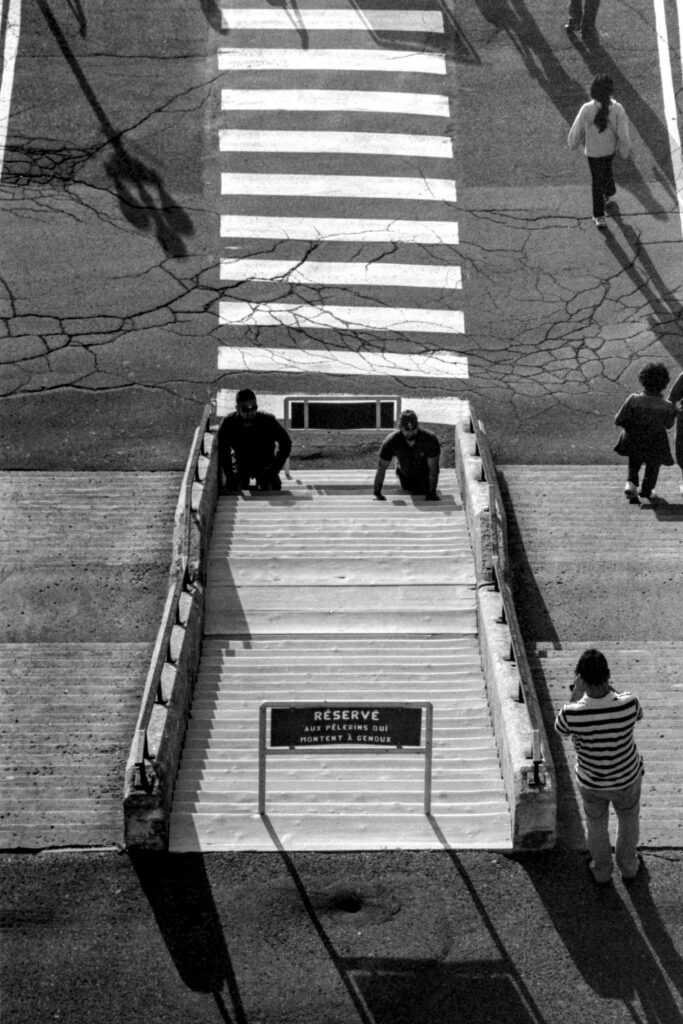
June 2011, Vancouver, BC, Canada
Taken on Kodak Ektar 100 w/ Mamiya C-220 TLR 105mm f3.5
Personal ramblings on photography

Apparently Kodak Alaris decided to restrict the sale of colour film in bulk, unless you are a movie production.
No more respooling to save on costs, which is what a lot of reseller were doing. Paying US$8-9 for a roll of Ektachrome instead of US$22 from Kodak was a significant saving.
As Kosmofoto reports, Reflx Lab says that its respooled colour film might not last long including the Cine film.
All of this coincide with them being sold to a private equity. Correlation is not causation, but coincidences are rare.
Previously: Kodak price updates and Kodak pauses film production for factory upgrades.

Kosmophoto tells us Kodak Alaris announces price rises for January 2025 – but Tri-X is getting cheaper:
In contrast to previous price increases, the majority of price increases will under 10%, with most falling between 5% and 8%.
It’s a mixed bag, some film raising in prices and some falling, with 120 rolls rising more than 135.
To be continued…
Previously: Kodak pauses film production for factory upgrades, Fujifilm film price increase, Price hike on Kodak film
The Verge signals us that Kodak pauses film production for factory upgrades to help meet demand:
Eastman Kodak has temporarily paused all film production. The news comes as part of a shutdown in November allowing the company to upgrade and modernize its Rochester, New York factory,
I tried to not make the headline click-bait, like the bits I saw earlier this week.
This is actually a good news in which Kodak need to pause production to better produce, due to increased demand. Increased demand is good, as it means film is alive.
In 2020, Eastman Kodak said demand for film had doubled between 2015 and 2019, after a decade-long period of decline following the start of consumer digital photography.
Let’s hope this is a positive signal from the previous news of Kodak photo businesses being sold to private equity.
DPReview: Kodak photo businesses sold to private equity
Well….
This is not good news. Private equity are the corporate looters. And this one is the one that removed “Co-op” from “Mountain Equipment Co-op”…
I don’t expect Kodak film product to be developing. Maybe it’s time to stock up. And when some Fujifilm are suspected to just be Kodak, I wonder about the broader impact.
When I wasn’t looking, 2 different model of film cameras where released under the Kodak brand. Just to be clear these are inexpensive and marginally better than the disposable counterparts, and Kodak is just a brand on top of it. This is not the Ricoh Pentax 17 at CA$680.
From 2022, the Kodak Ektar H35 Half Frame Camera is manufactured by Retopro. It’s 35mm film half-frame camera, with a 22mm acrylic lens, f/9.5 fixed aperture, and 1/100 sec fixed speed and a flash. The frame is vertical in the natural camera orientation as the film transport is horizontal. About CA$80. Comes in various colours in a design reminiscent of older Kodak camera.
In 2023, a follow up Kodak Ektar H35N still made by Retopro, brought the lens to a fixed f/8 aperture with one of the element made of glass, and now has a bulb shutter speed and a tripod mount, and can perform multiple exposures. Still has a flash. About CA$100. Comes in various colours with a slightly different design.
From 2024, the Kodak i60, manufactured by Meta Imaging Solutions is a 35mm film camera with a 31mm acrylic lens, f/10 fixed aperture with a minimum focusing distance of 1 meter and 1/125 sec fixed speed, and a flash. Really feels like a disposable camera you can refill. About CA$80 as well. Comes in various colours in design directly inspired by the Instamatic 100 from 1963. Reading Kodak own website saying it uses “135mm film”, I want to scream. Beside the design it looks like all the others on Kodak website.
All in all it seems like competition to Lomography, both in quality and and price, albeit with maybe Lomography trying to provide more “fun”.
The future of film doesn’t look bright.
First, James Cater write Film is Alive! — But it May Have a Terminal Illness, where the author expands on how the tech satellite to film is backwards: minilab and cameras, neither of these are being developed or even manufactured.
Second, the industry is in turnmoil.
The spun-off company that still make Kodak film, Kodak Alaris, is looking to sell its film and paper unit, for a meager $34M, and this shortly after announcing that the just revived Ektachrome 100 slide film would be made available in sheet and 120 format in April, in addition to the currently available 35mm.
Meanwhile, Tetenal, the European film chemistry manufacturer face closure after 172 years of activity. And this is bad news, even after CineStill new chemistry announcement.
PetaPixel has a closer look at Tetenal:
Without Tetenal’s chemistry branch, a lot of photographers, photofinishers, labs, printing companies and even the once so mighty Kodak itself might be left out in the rain, as Tetenal reportedly produces not only chemistry for EU distribution under license from Kodak but directly produces source chemicals for Kodak’s U.S. manufacturing.
and
Another immediate effect of Tetenal’s demise might be a supply glitch for RA-4 paper chemistry that many labs, finishers, and printing companies rely on.
This does not look good at all.
NPR: How Kodak’s Shirley Cards Set Photography’s Skin-Tone Standard.
An interesting tidbit of the history of photography: Kodak printing calibration that was setting a skin-tone standard when in reality there is none.
Kodak Alaris is discontinuing the BW 400CN.
A very nice film meant to shoot Black & White and have it processed in a regular one hour minilab as it is a C-41 process film.
Now that one hour minilabs are an endangered specie and that it is much easier to find Black & White chemistry than C-41, it was bound to happen. Not sure exactly what to replace it with.
Here are some samples I shot a few years ago: